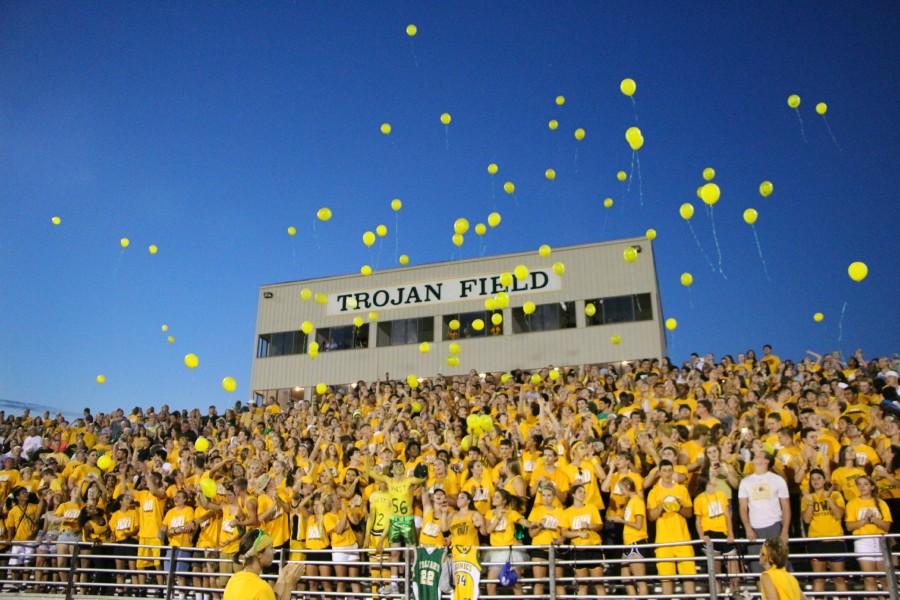Same sport, different support?
Despite actions such as Title IX meant to close the gender gap in sports, many coaches and athletes around the world, nationally and at West still feel that male and female athletics are not treated as equals. Whether it is participating in a gender-dominated sport or receiving media attention, many feel that the gender gap is still apparent.
April 7, 2016
Before the 1970s, participation by females in sports was small. In a 1971-1972 participation survey by the National Federation of High School Associations, total participation in US high school sports was 93 percent by males and only 7 percent by females. But in 1972 ,Title IX changed the sports world forever by requiring equal opportunities for male and female athletes, and participation on the female side since then has skyrocketed.
“Title IX came in there and forced some of those stubborn programs to add girls [sports programs] and that was good. What we saw was this big spike in girls’ participation, and college athletics has just ballooned over that time,” said Athletic Director Scott Kibby. “But I think we see now that we’ve plateaued and we are not really growing anymore, and I’m not sure why that is.”
After the initial boom, participation slowed and now ranges around 57-60 percent for boys and 40-43 percent for girls. Other than participation, the gender gap in sports describes the differences between male and female athletics in several areas which also includes media attention, salaries. Many coaches and athletes agree that the gender gap is not a positive thing for boys or girls, but have different opinions on what causes it, and how it can be closed.
“I think the gender gap needs to be closed. It gets on my nerves that people find guys sports more entertaining and more important. I feel like if girls show they are just as aggressive and just as willing to compete in their sports as guys, then I feel like we can change that,” said Taleah Smith ’17.
Girls soccer coach Dave Rosenthal agrees that people may see female athletics as less entertaining at first, which causes the disinterest. “I really wish that people would see women’s sports as equivalent, just as enjoyable, and it might be a different game. […]I think if you recognize that they are not necessarily similar sports, if they are playing men’s and women’s, but that they are different types of sports, and you look for different types of things to appreciate, I think that’s an important component,” Rosenthal said.
In Iowa, there are two governing bodies for athletics: a girl’s union (IGHSAU) and the boy’s association (IHSAA). These two agencies set the rules for how participation works on each side, which means the rules may not seem cohesive. On the boys side the IHSAA allows females to participate in sports such as wrestling or football, where there is not an equivalent sport on the female side. If a girl wishes to participate in one of these sports, the IHSAA recommends a meeting between coaches, parents, principal, athletic director and the athlete where, “The girl and her parent(s) should be informed that once she becomes a member of the team, she will be treated like all other team members,” (IHSAA 2015-2016 Handbook), among other recommendations. One athlete with experience in this area is Smith, who participated in football at the junior high level.
“[When] I showed up the first day of practice and for the first few weeks we did conditioning and the coaches were impressed with how well I was doing with conditioning. Then in the first game I ended up starting and did pretty well,” Smith said.
Although Smith did not continue to play football in high school due to size concerns, football coach Garrett Hartwig says he would encourage girls who are interested to join the team, but wants it to be for true passion for the sport, rather than political statements.
“I don’t want a girl to come out for the football team to make a statement that she’s a girl on a football team, I want her to come out because she wants to play, and she wants to compete in a great game,” Hartwig said.
Another athlete who has participated in a gender-dominated sport is Ben Jaeger ’18, who participates in cheerleading, “[Cheerleading] is a really cool thing to do because it’s a very different experience than most people have, but since it is a female dominated sport there’s a lot of gender stereotypes that go along with it,” Jaeger said.
Cheerleading is actually governed by the IHSAA and the Iowa Cheerleading Coaches Association and not by the girls union because originally, when cheer was created, it was for girls to cheer for the boys sports. The governing system, however, is why Jaeger was able to participate in cheer, as the IGHSAU does not allow boys to participate on girls sports teams, such as volleyball or softball.
“They believe that there’s a physicality advantage for guys competing against girls, so they wouldn’t want a 6’2 senior boy on the volleyball team against our girls. It’s a blanket thing to make sure the girls have a great experience and they’re safe,” Kibby said.
All in all, the gender gap is an ongoing problem not just at West but also nationally. Rosenthal agrees the gender gap is present in modern-day high school athletics, but that there is a still possibility that the gap can be closed.
“[The lack of participation of girls in athletics is] a large part due to societal history. We haven’t had the respect for female athletes in our culture and in many, many others across the world, and that has changed drastically over the years. In women’s soccer, the success of the national team and the support by US soccer to develop that, that helps, the national exposure helps. The fact that there’s a women’s professional basketball league helps. You get more and more press for these women, I think that all helps,” Rosenthal said.









